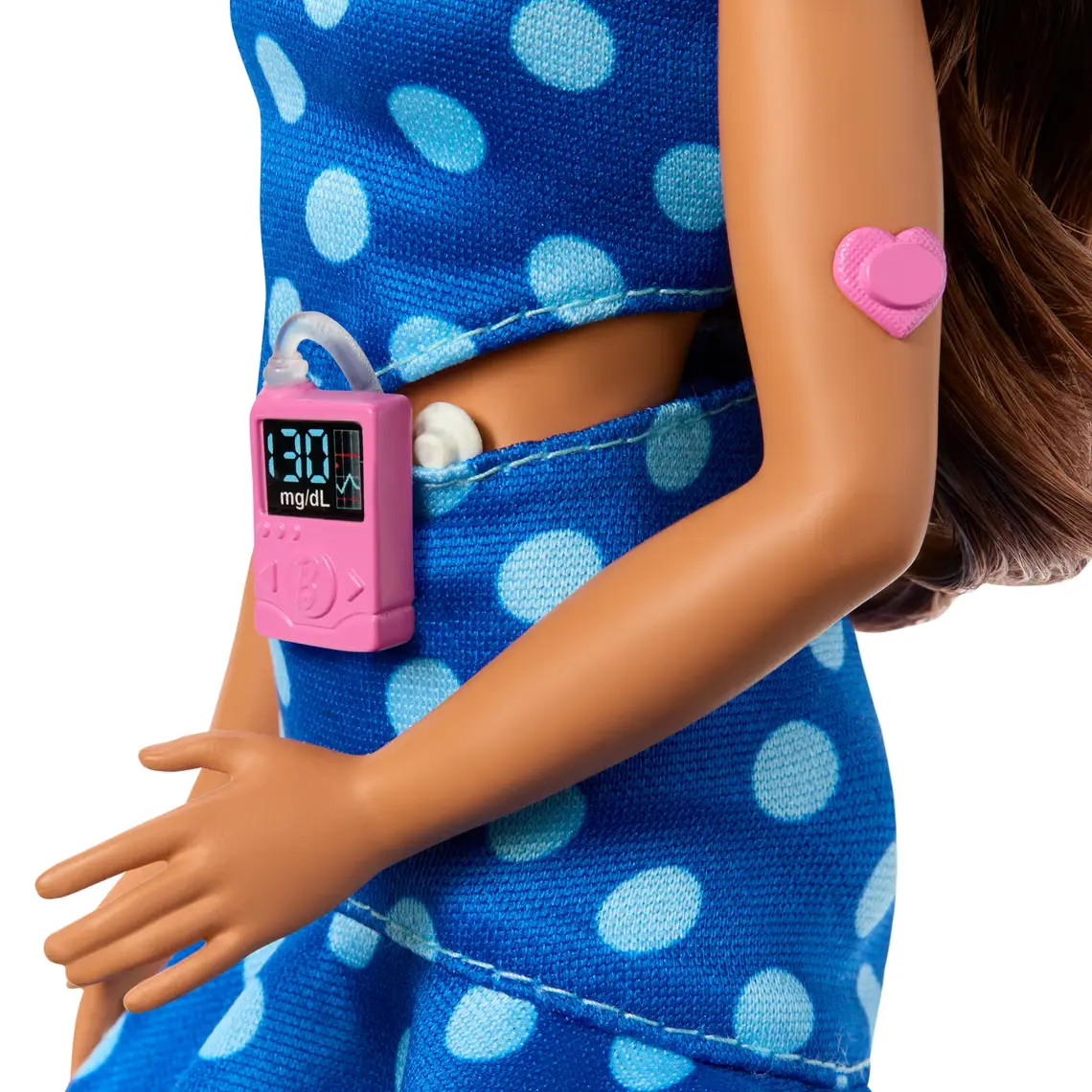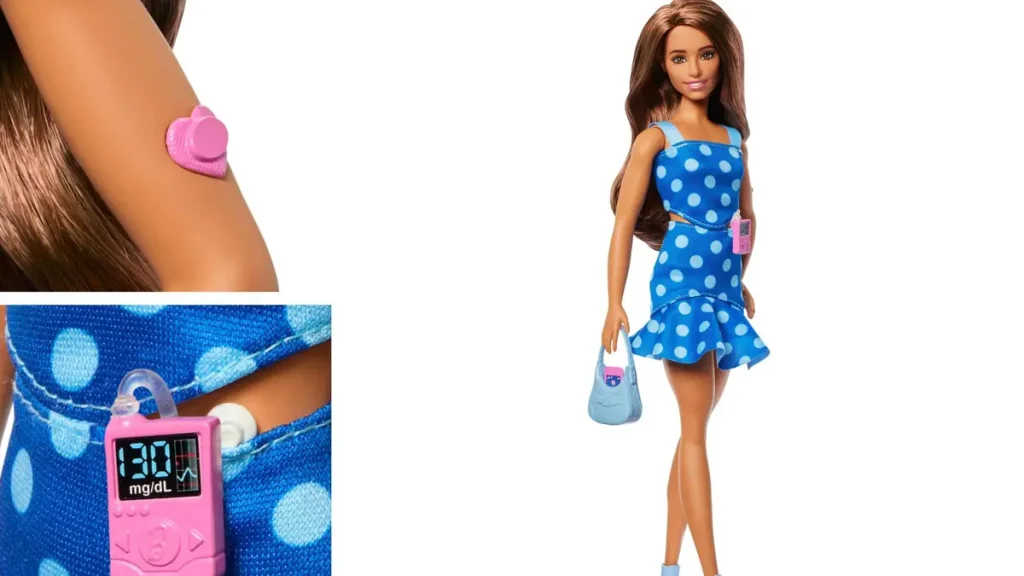Mattel has introduced a groundbreaking Barbie Fashionistas doll living with Type 1 diabetes, marking an important milestone in the brand’s diversity initiatives. This first-ever medical-inclusive barbie doll diabetes comes equipped with realistic pals—an insulin pump and continuous glucose monitor (CGM)—wrapped in a stylish blue polka dot outfit, making her a powerful beacon of empowerment and authenticity.
A Fashionista Barbie Doll with “Purpose”

Part of the 2025 Barbie Fashionistas collection, this special doll was created in collaboration with Breakthrough T1D (formerly JDRF) to ensure accurate representation of diabetes management tools. Retailing for around $10.99, the “barbie fashionistas doll with type 1 diabetes in polka dot outfit” comes with:
-
A wearable CGM on her arm, held by heart-shaped, Barbie-pink medical tape, connected to a toy phone displaying a monitoring app.
-
An insulin pump clipped elegantly to her waist.
-
A blue polka dot top and skirt, alluding to global diabetes awareness, and a pastel blue purse for snacks and supplies.
-
Light blue booties and chunky heels to round out her Fashionistas style.
Pattern of Superficial Inclusion in Barbie Dolls
Mattel’s “Fashionistas” range now includes dolls with disabilities, varied body types, hearable aids, and more. But many are pointing out a recurring problem: the base doll remains identical in facial structure, body proportions, and sanitized features, merely accessorized as “inclusive”
As noted in analysis of the Down syndrome Barbie, Mattel may add diversity in theory, yet these dolls still echo the same idealized Barbie template—rarely matching the physical reality or experiences they’re meant to represent.
Is This Just a “Woke Cash Grab”?
Online reaction was mixed. Some praised the move, while others dismissed it as hollow virtue signaling. In one pointed critique, a blind Barbie drew backlash with skeptics calling it a “woke cash grab” rather than a meaningful step forward. If a doll’s condition is reduced to pink gadgets and a trendy outfit, critics ask—what constitutes real representation?
Empowerment or Sanitized Storytelling?
Mattel says this doll allows kids with Type 1 diabetes to “see themselves” in play, but the broader question emerges: does a scripted doll accurately reflect the complexity of living with diabetes? It’s a condition that involves daily needle pricks, blood-sugar highs and lows, and emotional strain—none of which translate into a polished playset.
Representation matters—but critics emphasize that packaging serious health conditions into a sanitized Barbie image might minimize them, obscuring rather than honoring the challenges families face daily.
Corporate Trade-Off
Much like the Barbie movie’s reception, this initiative appears to merge genuine inclusivity efforts with corporate branding. Critics question whether empowering messaging masks a commercial strategy: inclusivity as marketing gimmick, rather than movement.
This tension underscores the question: can a global toy brand genuinely address serious health issues, or is it merely co-opting them to stay on-trend?
What’s Really Missing From The Barbie Doll?
-
Deeper storytelling: Young children aren’t given narratives about handling emergencies, dietary vigilance, or emotional swings—all core to Type 1 diabetes management.
-
Accessory depth: Is a snack purse equivalent to teaching preparedness and awareness? Missing is any component reflecting real challenges.
-
Fit and realism: As with past Barbie offshoots, the traditional mold remains—declaring inclusivity without altering the underlying structure to match real bodies.
So Is It Inclusive or Illusion?
The Barbie Fashionistas doll with Type 1 diabetes marks a milestone—but one cloaked in critique. It serves as both a reminder of the progress in boardroom diversity and of how that progress often remains surface-level, packaged in the same old pink box.
Kids deserve toys that reflect their bodies and life experiences—not sanitized versions that feel more like a marketing push than a mirror. Mattel may have taken a step forward, but without depth and authenticity, this doll risks being little more than a polka-dot emblem of “woke” advancement—pretty in packaging, shallow in substance.


